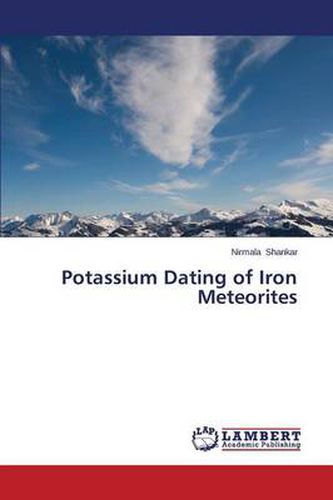Readings Newsletter
Become a Readings Member to make your shopping experience even easier.
Sign in or sign up for free!
You’re not far away from qualifying for FREE standard shipping within Australia
You’ve qualified for FREE standard shipping within Australia
The cart is loading…






This title is printed to order. This book may have been self-published. If so, we cannot guarantee the quality of the content. In the main most books will have gone through the editing process however some may not. We therefore suggest that you be aware of this before ordering this book. If in doubt check either the author or publisher’s details as we are unable to accept any returns unless they are faulty. Please contact us if you have any questions.
This research involves the determination of the cosmic ray exposure ages of iron meteorites using 39K-40K-41K dating. Potassium was separated from nickel using 4 mL of Chelex-100 resin and 15 mL of ammonium acetate (a mixture of equal volumes of 2 M acetic acid and 3 M aqueous ammonia) as eluent. Nickel was retained as a complex and potassium elutes out. The method is effective because of a low value for the blanks ( 50 ng of potassium) that could be achieved. The concentration of the separated K, measured using Graphite furnace atomic absorption spectrometry (GFAAS), inductively coupled mass spectrometry (ICPMS) and isotope dilution mass spectrometry (IDMS) and will be used for the calculation of 39K-40K-41K exposure ages of iron meteorites. Potassium was successfully separated from multiple samples of 8 iron meteorites. The calculated CRE age (378 Ma) agrees for the meteorite Brownfield (355 Ma, Voshage and Feldmann, 1979) with the literature value. The literature value (645 Ma, Voshage and Feldmann, 1979) is 3 times the value calculated (190 Ma, this work) for Picacho.
$9.00 standard shipping within Australia
FREE standard shipping within Australia for orders over $100.00
Express & International shipping calculated at checkout
This title is printed to order. This book may have been self-published. If so, we cannot guarantee the quality of the content. In the main most books will have gone through the editing process however some may not. We therefore suggest that you be aware of this before ordering this book. If in doubt check either the author or publisher’s details as we are unable to accept any returns unless they are faulty. Please contact us if you have any questions.
This research involves the determination of the cosmic ray exposure ages of iron meteorites using 39K-40K-41K dating. Potassium was separated from nickel using 4 mL of Chelex-100 resin and 15 mL of ammonium acetate (a mixture of equal volumes of 2 M acetic acid and 3 M aqueous ammonia) as eluent. Nickel was retained as a complex and potassium elutes out. The method is effective because of a low value for the blanks ( 50 ng of potassium) that could be achieved. The concentration of the separated K, measured using Graphite furnace atomic absorption spectrometry (GFAAS), inductively coupled mass spectrometry (ICPMS) and isotope dilution mass spectrometry (IDMS) and will be used for the calculation of 39K-40K-41K exposure ages of iron meteorites. Potassium was successfully separated from multiple samples of 8 iron meteorites. The calculated CRE age (378 Ma) agrees for the meteorite Brownfield (355 Ma, Voshage and Feldmann, 1979) with the literature value. The literature value (645 Ma, Voshage and Feldmann, 1979) is 3 times the value calculated (190 Ma, this work) for Picacho.